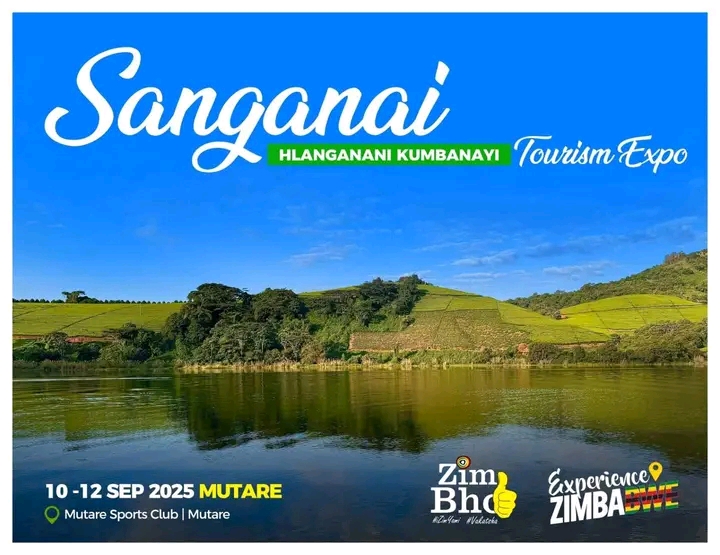By Dickson Bandera
The spotlight will be on Harare from May 19 to 23, 2025 as Zimbabwe hosts a historic gathering of regional leaders, conservation experts, and international partners for the Southern African Development Community (SADC) Transfrontier Conservation Areas (TFCA) International Conference and Summit, set to take place at the Harare International Conference Centre.
The event marks a significant milestone — 25 years since the inception of the TFCA initiative, aimed at promoting cross-border conservation and regional integration.
The conference and summit will be held under the theme, “SADC Transfrontier Conservation Areas: 25 Years of Cooperation for Regional Integration and Sustainable Development“.
Speaking on behalf of the Government of Zimbabwe in Harare this Friday, Ambassador Tadeous Tafirenyika Chifamba emphasized that the landmark event will serve multiple objectives.
“This milestone event will celebrate a quarter century of progress, evaluate lessons learned, address challenges and chart the future of the newly approved SADC TFCA program which runs from 2023 to 2033 whose key objectives include showcasing 25 years of TFCA achievements and the strengthening political commitment among SADC member states and mobilizing investments for conservation, local communities and sustainable development as well as strengthening SADC’s biodiversity economy for prosperity,” he said.
As Zimbabwe takes pride in hosting the event, the ambassador underlined the importance of TFCAs in driving development, peace, and cooperation.
“As Zimbabwe concludes preparations to host this landmark event, we take immense pride in highlighting the pivotal role of TFCAs in our advancing sustainable development, peace and regional cooperation,” he stated.
Tracing the origins of the initiative, he said, “The TFCA initiative stresses its origin to the 1999 SADC Protocol on Wildlife Conservation and Law Enforcement which defines a transfrontier conservation area as — and I quote — the area or component of a large ecological region that straddles the boundaries of two or more countries canvassing one or more protected areas as well as multiple use areas.”
He further noted the founding principles of TFCAs as outlined under Article 4, Objective 2(f) of the protocol.
“Under Article 4, Objective 2f, SADC member states committed to establishing TFCAs with the following key objectives: fostering transnational collaboration among states, promoting cooperative management of biological and cultural heritage resources through partnerships between governments, the private sector, local communities and non-governmental organizations, enhancing ecosystem integrity by harmonizing wildlife management policies and removing barriers to natural animal movement, establishing a sustainable economic base through strategic development frameworks, promoting transboundary ecotourism to drive regional socio-economic growth and finally facilitating knowledge exchange on technical, scientific and legal best practices for ecosystem management,” Ambassador Chifamba explained.

The journey of the TFCA network began with the Kgalagadi Transfrontier Park between Botswana and South Africa, launched in 1999.
“Since the launch of Africa’s first TFCA — which was the Kgalagadi Transfrontier Park or KTP between Botswana and South Africa in 1999 — the region has made remarkable strides,” said the ambassador.
“Today 13 TFCAs span terrestrial and marine environments covering 1.2 million square kilometers — approximately seven percent of SADC land area — with each at varying stages of development,” he added.
He then listed some of the initiative’s major accomplishments: “These achievements reflect the unwavering political will of regional leaders, treaties, protocols and memoranda of understanding to expand the TFCA network over the past 25 years.
“TFCAs have delivered transformative outcomes such as the following: enhanced ecological connectivity through expanded conservation areas, establishment of the TFCA financing facility to support program implementation, successful joint law enforcement operations underscoring a cross-border political commitment, active community participation in TFCA governance, tourist access facilities in parks like Kgalagadi, Great Limpopo and Ais-Ais, the KAZA UNIVISA system boosting tourism to Victoria Falls and Livingstone, the SADC TFCA network uniting more than 600 practitioners and finally the boundless Southern African brand promoting tourism and investment.”
In Zimbabwe, the TFCA approach aligns strongly with national development goals.
“In Zimbabwe, TFCAs align with our national priorities under the National Development Strategy 1, which speaks to sustainable development, environmental protection, and regional integration,” he said.
“As a country, we are actively participating in six TFCAs, including KAZA, Great Limpopo, Greater Mapungubwe, Chimanimani, ZIMOZA and Lower Zambezi Mana Pools, also known as Loza Mapu,” Ambassador Chifamba noted.
He concluded with a reaffirmation of Zimbabwe’s commitment and a warm invitation to regional and global stakeholders.
“We therefore reaffirm our commitment to conserving natural and cultural resources through TFCAs, a beacon of hope for regional sustainability. We extend a warm invitation to all SADC member states, international corporations, supporting partners and stakeholders to join us in Harare. Your expertise and perspectives will be invaluable in shaping the next era of the TFCAs.
He also called on advertisers to come on board for exhibition during the summit.
“Exhibition space is also available to those intending to showcase their conservation efforts. Together, let us reaffirm our shared vision for a future where conservation and development go hand in hand,” he said.


